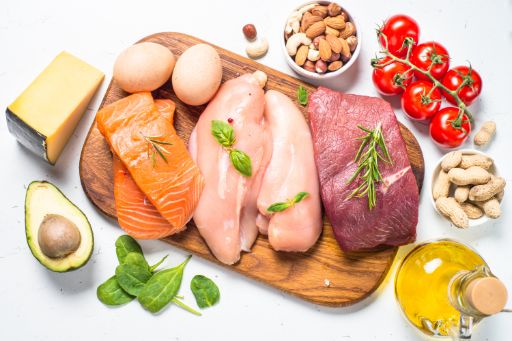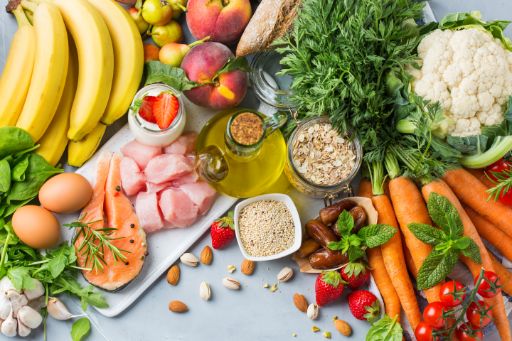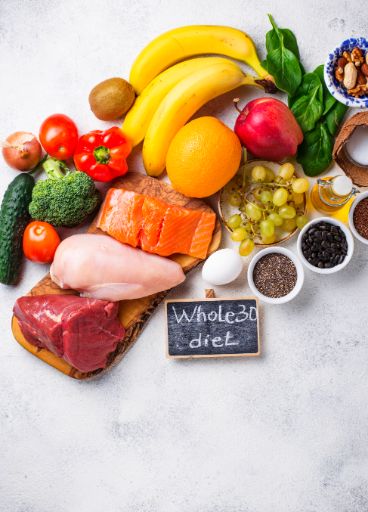Weight loss plans are strategies or programs designed to assist people in meeting their weight loss goals. There are various kinds of weight loss plans, from commercial diets that provide specific guidelines and products, to lifestyle dietary patterns which focus on certain food or nutrients. Weight loss plans vary in terms of their nutritional quality, sustainability, effectiveness and health benefits – it’s essential that you select one which meets all your individual requirements as well as any medical conditions you have. In this article we review 2023 plans with strong expert evidence and opinions for you to choose from.
Low-carb diets

Low-carb diets are increasingly popular among people looking to lose weight, improve their health, or manage certain medical conditions. Low-carb diets typically limit carbohydrates such as grains, fruit, starchy vegetables and sugars and emphasize those high in proteins and fats instead. There are various versions of this type of diet including keto diet, no carb diet plan for two weeks plan of two week low-carb Mediterranean. Here is an overview of each:
- The keto diet is a low-carb, high-fat diet designed to create ketosis – a metabolic state in which fat instead of glucose is burned for energy – through restricting carbs to 20-50 grams per day while increasing intake of fats from sources such as meat, cheese, eggs, butter cream nuts , keto fresh cream , keto cheese and oils. Benefits may include weight loss, improved blood sugar control reduced inflammation enhanced brain function. It may also cause keto flu, nutritional deficiencies digestive issues increased cholesterol levels. However it could have adverse side effects.
- The no carbs diet plan for two weeks is a short-term low-carb diet designed to quickly kick-start weight loss by cutting all sources of carbs out of your diet, such as bread, pasta, rice, potatoes, fruits, sweets, and even some vegetables. Instead, this plan emphasizes meat, fish, eggs, cheese, nuts seeds and oils as sources of protein and fat that may help you lose weight quickly while simultaneously decreasing appetite and insulin levels – though its long term effectiveness could potentially prove difficult and unsustainable compared with more sustainable low-carb plans containing essential fiber vitamins minerals antioxidants from food sources.
- The Low Carb Mediterranean Diet follows traditional eating patterns of people living around the Mediterranean Sea. The diet focuses on plant foods like fruits and vegetables; whole grains; legumes; nuts; and seeds as well as healthy fats such as olive oil, fish oil and avocado as well as moderate amounts of dairy, eggs poultry wine wine. In addition it has been demonstrated to lower risk factors associated with heart disease stroke diabetes cancer dementia. Some individuals may benefit from following a lower-carb version of the Mediterranean diet, especially those suffering from insulin resistance, metabolic syndrome or type 2 diabetes. Lowering carbs can help improve blood sugar levels, decrease inflammation and promote ketosis – the metabolic state in which fat instead of glucose fuels your body – in which body begins burning fat instead. There are two variations on this plan – low-carb Mediterranean Diet (LCMD) and Mediterranean Keto Diet.
- The Low-Carb Mediterranean Diet (LCMD) is similar to its standard Mediterranean counterpart, except it limits carb intake to 20-35% of calories each day and replaces some starchy vegetables and fruit with non-starchy ones and berries for increased nutrition and brain protection. Benefits may include weight loss, improved heart health, reduced risk of cancers and diabetes and protection of brain tissue.
- The Mediterranean keto diet is an extreme form of the low-carb Mediterranean diet that restricts carbs to less than 10% of total daily caloric intake and increases fats such as olive oil, nuts, seeds, cheese and cream consumption. The Mediterranean keto diet seeks to induce ketosis for improved health benefits from both the keto and Mediterranean diets; however, not everyone may find this approach suitable and may require close monitoring from a healthcare professional.
- A variation of the Mediterranean diet known as vegetarian Mediterranean Diet excludes all animal products except dairy and eggs; making this diet suitable for lacto-ovo vegetarian lifestyle or those looking to reduce meat consumption for ethical or environmental reasons. It offers adequate protein from legumes, nuts, seeds, dairy and eggs; fiber antioxidant vitamins minerals from plant foods as well as an anticancer component which could potentially reduce risks like heart disease diabetes obesity cancers etc.
- Mediterranean diet for fatty liver : Fatty liver, also known as hepatic steatosis, is a condition in which fat accumulates in the liver. Both alcohol-associated liver diseases and nonalcoholic fatty liver disease (NAFLD) fall under this umbrella. Too much fat in the liver can lead to inflammation and potentially irreversible liver damage that alters the liver’s function — and therefore blood sugar regulation and fat breakdown. The Mediterranean diet is rich in whole grains, olive oil, fruits, vegetables, fish, nuts, and legumes and low in added sugars and processed meats. It’s one of the most researched diets . Research indicates that following a Mediterranean diet may also be beneficial for fatty liver . The Mediterranean diet may have this protective effect against NAFLD due to its proven track record for improving many of the risk factors associated with the condition, including: obesity, type 2 diabetes, metabolic syndrome and cardiovascular disease.
DASH Diet

The Dietary Approaches to Stop Hypertension, more commonly referred to as DASH diet, aims to low-fat diets to lower blood pressure and treat or prevent hypertension by eating foods rich in potassium, calcium, magnesium, fiber and protein such as fruits, vegetables, whole grains, low-fat dairy products, lean meats nuts seeds legumes. Furthermore it limits sodium, saturated fat cholesterol and added sugars.
- DASH Diet Breakfast : A healthy breakfast on the DASH diet can help you start your day with energy and nutrients. Some examples of DASH diet breakfast are oatmeal with fresh fruit and nuts; scrambled eggs with whole wheat toast and avocado; yogurt with granola and berries; or a smoothie made with low-fat milk, banana, and spinach .
- The Mediterranean DASH Diet : The Mediterranean DASH Diet combines elements from both DASH Diet and Mediterranean Diet into one eating pattern designed to reduce blood pressure and improve heart health. While following many of the same principles as DASH Diet, the Mediterranean DASH Diet includes more healthy fats such as olive oil, fish oil and nuts; flavorful herbs and spices and occasional red wines in moderation compared to DASH Diet alone.
- DASH diet snacks : Snacking on the DASH diet is an effective way to curb hunger between meals. But choosing snacks that are low in sodium, sugar, fat and antioxidants, but high in fiber, protein and antioxidants is key. Examples of DASH diet snacks may include fresh or dried fruit; raw or roasted nuts or seeds; fresh hummus with whole wheat pita bread or carrot sticks; cheese with whole grain crackers or apple slices; or popcorn sprinkled with parmesan cheese as examples of such goodies.
Intermittent Fasting

Intermittent fasting is an increasingly popular eating trend that alternates periods of eating and fasting, often cycled every few days or so. Some may wonder what is the optimal intermittent fasting plan for women over 50, if coffee creamer should be included during their fasting window, and how it compares with keto dieting. here are some answers:
- Best intermittent fasting for women over 50 : There is no clear-cut answer as to which intermittent fasting method would best fit a woman over 50; individual goals, preferences and health conditions all play a factor. Here are some general tips when selecting an intermittent fasting strategy:
- Start slowly and listen to your body; starting out with shorter fasting windows (such as 12 hours ) may be best to allow your body to adjust over time. Fasting on consecutive days or during times of stress, illness, or hormonal fluctuations should also be avoided for optimum success.
- Choose a fasting method that best fits into your lifestyle and schedule. When making this decision, keep factors like work hours, family obligations, social events and exercise routines in mind when determining when and how long to fast. For instance, if you have a busy morning routine you might opt for 16/8 method which involves fasting for 16 hours and eating 8 hours (usually noon-8 pm). Or for greater flexibility try 5:2 method whereby eating normally five days while restricting calories by 500-600 on two nonconsecutive days – then fasting.
- Be sure to eat a nutritionally-balanced and varied diet during your eating window. Choose foods rich in proteins, fiber, healthy fats, vitamins, minerals, antioxidants and anti-inflammatories like fruits, vegetables, whole grains, legumes, nuts seeds lean meats fish eggs dairy and healthy oils as part of a nutritious meal. Limit processed food such as added sugars refined carbs alcohol as much as possible.
- Consult with your physician prior to beginning any intermittent fasting plan. Intermittent fasting may not be suitable for everyone, especially if you have medical conditions or take medications which affect blood sugar, blood pressure or hormone levels. Monitoring health indicators regularly is also recommended so as to adjust plans as necessary.
- Intermittent fasting coffee creamer : Coffee is one of the most commonly consumed beverages during fasting windows, yet some individuals may question if adding creamer will compromise their fast. The answer depends on both its type and amount.
- Black coffee sans additives is generally considered fasting-friendly as it contains negligible calories and won’t affect insulin or ketosis levels.
- Coffee with a small amount of heavy cream or half-and-half may also be suitable for some individuals as it only adds minimal calories and does not significantly alter metabolism. You should limit yourself to no more than one tablespoon per cup and avoid sweeteners altogether.
- Coffee with milk or non-dairy creamers may not be suitable for intermittent fasting as these contain more calories, carbs, sugars and additives that could increase insulin levels and disrupt your fast. You should instead save such creamers for your eating window or avoid them altogether.
- Intermittent Fasting Vs Keto Diet : Intermittent fasting and the keto diet are two distinct but complementary forms of eating which may help with weight loss and improve health, respectively. Intermittent fasting emphasizes eating when needed while keto emphasizes what should be eaten:
- The keto diet is a very low-carb, high-fat diet designed to induce ketosis – a metabolic state in which fat is burned for energy instead of glucose – by restricting carb intake to 20-50 grams a day while increasing intake of fat from sources like meat, cheese, eggs, butter cream nuts and oils. Benefits may include weight loss, improved blood sugar control reduced inflammation enhanced brain function as well as side effects like keto flu or digestive issues and an increase in cholesterol levels.
- Intermittent fasting and the keto diet can work hand in hand to lower insulin levels and accelerate fat-burning. By combining both methods together, it may be possible to enter ketosis faster, sustain it longer, and reap greater rewards than either method alone. But be wary not to overdo it, as too much restriction may lead to hunger pangs, cravings, fatigue or hormonal imbalance.
Whole30 Program

Whole30 is a 30-day diet program developed by Melissa Hartwig Urban and Dallas Hartwig to reduce inflammation, cravings, or hormonal imbalances through food elimination. Based on the principles of paleo diet, Whole30 requires its participants to refrain from consuming certain food groups over that timeframe:
- Grain products such as wheat, rice, oats, corn, quinoa and barley
- legumes like beans peas lentils soy peanuts etc; dairy such as milk cheese yogurt butter umplut
- honey maple syrup agave nectar stevia sucralose are among many of the sugar and artificial sweeteners consumed regularly by people around the world
- Processed foods, including chips, crackers, cereals and sauces
- baked goods and desserts (bread muffins cakes cookies etc)
As well as processed and refined flour products are prohibited from eating the Whole30 program, in their place we encourage eating
- meat such as beef, chicken, turkey and lamb
- seafood such as fish shrimp crab and lobster as well as eggs
- Vegetables such as broccoli, spinach, kale, carrots and potatoes.
- Fruits including apples, bananas, berries, oranges and orange juice.
- Nuts and seeds (excluding peanuts ) such as almonds walnuts cashews sunflower seeds
- herbs and spices such as garlic, ginger, basil, and cinnamon
Are you curious to learn more about the Whole30 program? Stay tuned! Our next article will outline everything in greater depth while offering up tasty recipes to try for yourself. Thank you for being part of our community; stay tuned! We welcome any input on how best we can make this program enjoyable. Stay tuned and thank you again for reading – stay tuned!







